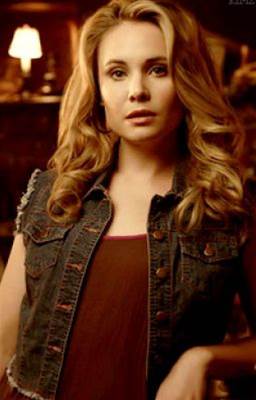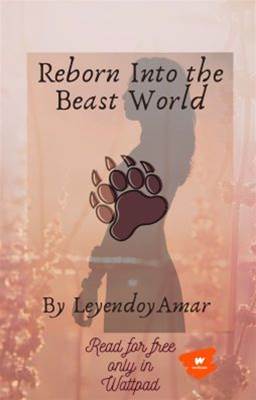《Waters of Oblivion | ✓》Trivia
Advertisement
Author's Note: Here are some "behind the scenes" details that may interest you about this story. Warning - this may contain spoilers so don't read before you've finished all the chapters that came before it!
Beethoven's Immortal Beloved letters as found in the excerpt at the start of the story inspired the name of the group of immortals that Max leads. Beloved translated into Italian is amato (masculine form), which could theoretically sound like immortal to someone with less than ideal hearing.
The amnesia that comes with becoming an immortal in this book was inspired by the Greek myth of the Lethe River, one of the seven rivers in the Underworld. The Lethe was said to contain the waters of oblivion that washed memories away. Initially, the memory loss in the book was written to be somewhat temporary, lasting only about a year before everything was recalled. However, this was changed to be permanent (with the caveats introduced in Book Two) in order to make the threat of dying more serious.
The book originally started with a Prologue that took place as Reine first awakened in the Venetian church after drowning in 1498. This was removed from the beginning in the final edits, but most was re-inserted into a later chapter.
Some dialogue was also removed from Chapter 1, including Reine's explanation that her name (pronounced like wren) meant queen in French. Her mother was originally from Lyon and she named her that because after having four boys, she was very happy to finally have a daughter.
Amara's name is a reference to amaranth, which is a dark, red flower that's a symbol for immortality. The color - which is also a subtle nod to pomegranate (another immortality symbol) is repeated in both Max's Maserati, as well as his home. The fleur de lis - which appears as a silver charm on Jameela's bracelet - also references both the Holy Trinity, as well as immortal life.
Advertisement
The first painting that Reine shows her tour group in the National Gallery of Art - a portrait by DaVinci of Ginevra DeBenci - is also a bit of foreshadowing to the explicit DaVinci connection that comes later. There is additional significance to Reine's two favorite pieces of art that she mentions to Gabe in this same chapter.
The portrait Reine and the Professor visit in Venice that is supposed to be of her does exist in real life. The chalk on vellum La Bella Principessa (Portrait of a Beautiful Princess or The Young Fiancée) was linked to Leonardo da Vinci in 2010. Although there are some strong arguments for the attribution, not all experts agree and many think it was made by another artist.
Although Reine leaving her shoes in the boat during the gondola ride seems to recall the story of Cinderella, this was only a happy coincidence and not intentional.
Max's house outside of Philadelphia was inspired by the Rock Rose mansion in Radnor, Pennsylvania. It is located at 200 Pine Tree Road in Wayne, north of Radnor. Built in 1912 by Zatzinger, Borie and Medary, it is 14,000 square feet and sits on 5.4 acres. In 2013, Rock Rose was for sale for $4.8M.
Reine's observation that the chandelier in the mansion "is a Barovier" alludes to her having been chandelier shopping with Max before she drowned. The Barovier glassworks has been making chandeliers in Murano, Italy since 1295.
Sylvana was originally called Veruschka. Her last name of Banica is not mentioned until Part Two.
The name of Max's butler is Connor, a subtle nod to Connor MacLeod the famous immortal from THE HIGHLANDER movies.
Morgan and Paisley's last name is Pendle, which is a subtle nod to the Pendle Witches of 17th century Lancashire.
Advertisement
The Maserati Quattroporte that Max drives did in fact come in the color Bordeaux Pontevecchio between 2005 and 2013. The Ponte Vecchio is the iconic bridge over the Arno River in Florence, Italy.
When riding in Max's car, Reine makes a reference to an iconic line from Bram Stoker's Dracula. Did you catch it?
The painting of Leda and the Swan that hangs in Reine's living room has significance for the events of Part Two, namely that she is pregnant with twins who have different fathers.
A character called Liam Vander Berg was cut entirely from the book in final edits. He was one of Reine's students who also worked part-time at the car dealership she bought her new BMW from, and he also briefly showed up in Glen Echo Park. His scenes were cut to improve pacing.
Most of the book was written while listening to Pachelbel's Canon and it's considered the story's theme song.
The Confraternity of the Resurrection's Council is modeled on Florence's Council of Ten, which was the city's governing body during the Renaissance.
Very few real locations were altered in the story and most can be found just as described. A handful were changed, including the name of Gabe's old school, however, a private boys' preparatory school does exist in that area of Maryland. Scoby Castle in reality is called Cliffe Castle in Yorkshire, and the name in the book was changed as an homage to Scooby Doo. The Byrd Theater is really located in Richmond, Virginia, but in reality, it has not been converted to a restaurant as in the story. However, all of the other place names and descriptions are accurate, including the contents of the National Gallery, the Dodge's Palace, Glen Echo Park, Chambord Palace, Brugge, the Vasari Corridor in Florence, and the Crypt of St. Mary Undercroft at Westminster.
Part 1 takes place in less than an eight week time span, from the first Friday in January until mid-March. Since Valentine's Day (February 14) falls on a Sunday, the year can be 2010, 2016 or 2021.
Advertisement
- In Serial221 Chapters

Sister, Will You Be Pregnant With My Husband's Child
"Will you sleep with my husband until you are pregnant and give birth to his child?"
8 4228 - In Serial80 Chapters

The Runt & The Alpha
~~~~~~~~~~~~~~~Meet Layla Anderson runt of the pack. In most packs runts are taken care of, protected. Although in Layla's case this wasn't it. Everyone in her pack despised her, even going as far as beating her, she had more scars than she would like. All for being born basically. To make matters worse her parents left the pack and haven't been heard from sense. During all of this Layla finds her mate, someone she would have never expected it to be.Meet Landon Carter the cruelest Alpha of the Blood Moon pack. Everyone fears him he's taken over more packs in his area than any other alpha & recruited them to his pack. The pack everyone knew not to step foot into. Landon's only rule he stood by was to never disrespect a girl, a rule his beloved mother told him to live by. Amidst all of his power and viciousness he finds his mate, what will he do when he finds out his pack has broken his sacred rule towards his mate.~~~~~~~~~~~~~~~~~~~
8 506 - In Serial11 Chapters

Taking Over Me | Camille O'Connell
Antoinette Deveraux was trying to adjust fully to the life of a vampire. Having been rescued from probable death by Marcel Gerard years before, she had forced the trauma of her past into a dark corner of her mind, and never looked at it. When Antoinette meets Camille O'Connell, she finds herself feeling things she thought she would feel again, and wonders if it could be love.[The Originals AU] [Camille O'Connell AU] [Camille O'Connell X OFC]
8 253 - In Serial118 Chapters

Reborn into The Beast World
Ever heard of the woman who suddenly appeared in a world filled with beastmen? You know, the place of walking hunky men showing off their bodies, ears, tails, blood, and ooops, yeahh, um, blood.In fact it's blood and fur everywhere. You gotta hunt for your food and fight for your territory. No, I'm not talking about a simple yap and spray of urine. There you gotta show you're strong or you'll end up someone else's food. So, if you're not strong, then the quickest (if not easiest) survival guide is to belong to a strong family. My story begins with me snot crying into this beast world. Meaning you got a bonafide bred and born female showing you the ends and outs of this overpopulated male world. Follow my story as I search for beastmen to join my family while on the way receiving a surprise... She's HERE?!* MC starts out as a cub...© 2021 Leyendoyamar. All rights reserved.** Cover updated due to respecting copyrights. Great place to look for free images are canvas and pixels *** COMPLETE. Undergoing editing.
8 171 - In Serial7 Chapters

The White Cat Is His Majesty's Lover
E N G L I S H M E D I U M💭 O N G O I N G | Under RevisionIt's about a cat and the characters' white moonlight(first love).The author of the top book selling "The Flowers Bloom At Winter Ends" is probably one of the most awaited for the netizens. The author itself is unknown but her work is the most-love by everyone. However, it isn't just about it, the King of the Entertainment Company for producing the best movies and top artists, the CEO Wan Chen claimed himself that the author was his white moonlight! As the every girl's dream and every boy's idol, Wan Chen himself has an unparalleled beauty coupled with his skills and wealth but everyone knows him as a typical iceberg man that no one can move except for the mysterious author.Here, not just everyone was waiting for the unknown author but everyone also knew that the King himself is waiting for his white moonlight.While Wan Chen is continuously waiting for her to come back by herself, he met a white cat that comforted his melancholy heart. However, why does as days passes by, his cat is becoming more and more familiar?... It seems to be a human-like?... and why does he sees a familiar face every time?c o v e r n o t m i n e | ©All rights reserved © ailespeakApril 2, 2021 |Revised: October 11, 2022 |
8 82 - In Serial75 Chapters

His Personal Chef
(On hold till December.)"The worst thing about love is; no matter how much tears they bring to your eyes. Your starved heart will always crave for their love." - Winnie Rose Smith. "I'm not made for love. I don't deserve you. I know I'm going to screw this up. I'm going to push you away or do something to hurt you. I'll fuck us up, you'll be just another person I hurt. Just walk away now." - Damien White Knight. Damien White Knight, he is the world's richest super malemodel. Not only that but his business is on the top too. In a snap of finger, he gets everything he want. But what happens when he can no longer gets the love he crave for from his ex Admirer none other then Winnie Rose Smith? Facing rejection from her crush. Winnie decides to leave America for good, leaving all good and bad people behind. But after 4 years she is back, only to find out that her father is dieing and she is stuck being a Personal Chef to Damien.#3 in player - 16|04|2020#1 in hotboss - 16|04|2020Book published (started) : 29|12|19
8 113







 Prev Chap
Prev Chap Next Chap
Next Chap Chap List
Chap List
 Boy
Boy Girl
Girl
